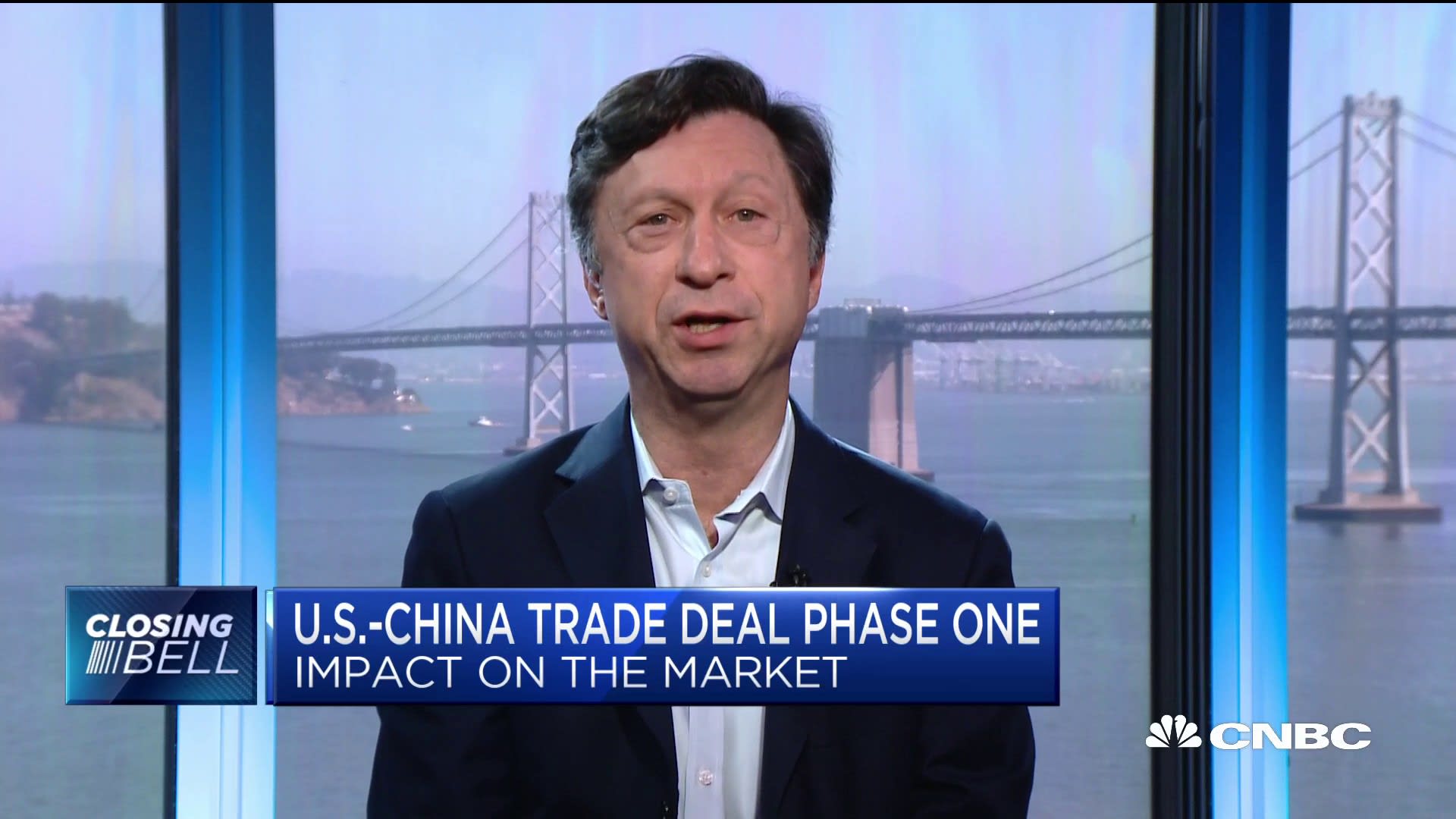China's Strategic Approach To Securing A US Trade Deal

Table of Contents
Securing favorable trade deals with the United States is a paramount strategic goal for China. This article delves into the multifaceted approach China employs, analyzing its negotiating tactics, key areas of negotiation, and the role of diplomacy in achieving its objectives. Understanding China's strategies is crucial for navigating the complex and ever-evolving landscape of US-China trade relations.
Understanding China's Negotiating Tactics
China's approach to trade negotiations with the US is characterized by several key tactical elements that demonstrate a long-term strategic vision.
-
Economic Leverage and Reciprocity: China expertly leverages its massive domestic market and its growing economic influence as powerful bargaining chips. For example, the significant purchase of US agricultural products, particularly soybeans, has often been used to secure concessions in other areas, such as reduced tariffs on Chinese goods. The core principle underlying many of China's negotiations is reciprocity: China expects concessions from the US in exchange for its own market openings or policy adjustments. This tit-for-tat approach is a hallmark of their negotiating style.
-
Strategic Patience and Long-Term Vision: China demonstrates a remarkable capacity for strategic patience, often willing to engage in protracted negotiations spanning years. This reflects their long-term vision of economic dominance and their willingness to pursue gradual gains over immediate breakthroughs. The Belt and Road Initiative, a massive infrastructure project spanning numerous countries, perfectly illustrates this long-term strategic focus extending far beyond immediate trade deals. Their patience allows them to weather short-term setbacks and ultimately achieve their broader economic goals.
-
Internal Political Considerations: Internal political dynamics within China significantly shape its negotiating stance. Different factions within the Chinese government may hold varying priorities regarding specific trade concessions or policy adjustments, influencing the overall negotiating strategy. Balancing these internal pressures while presenting a unified front to the US is a crucial aspect of their approach. Understanding these internal power dynamics is key to deciphering China's sometimes seemingly contradictory negotiating positions.
Key Areas of Negotiation and Concession
Several key areas have been central to US-China trade negotiations, with varying degrees of progress and concession:
-
Intellectual Property Rights (IPR) Protection: While China has made significant efforts to improve IPR protection, enforcement remains a significant challenge. Specific reforms, such as increased penalties for infringement and stricter regulations on counterfeit goods, have been implemented. However, challenges persist, particularly regarding enforcement mechanisms and the protection of emerging technologies. The ongoing debate about the adequacy of these reforms highlights the complexity of this issue.
-
Technology Transfer and Market Access: The transfer of advanced technologies remains a highly contentious issue. China has made some efforts to open its markets further, but restrictions on foreign companies' access to certain strategically important sectors, such as telecommunications and artificial intelligence, continue. Foreign investment regulations, restrictions on data localization, and concerns about forced technology transfer remain significant barriers.
-
State-Owned Enterprises (SOEs) and Subsidies: The role of state-owned enterprises (SOEs) and government subsidies in the Chinese economy is another major area of contention. Reforms aimed at leveling the playing field for private companies are ongoing but slow, and the issue of potentially unfair subsidies, especially in sectors like steel and aluminum, remains a significant point of friction in trade negotiations. The transparency and accountability of SOE operations are also frequently called into question.
The Role of Bilateral and Multilateral Diplomacy
China's trade strategy isn't solely focused on bilateral negotiations with the US. It actively leverages multilateral platforms and relationships with other nations to further its strategic goals.
-
Engagement with Other Countries: China actively engages with other countries within the World Trade Organization (WTO) and through various regional trade agreements, such as the Regional Comprehensive Economic Partnership (RCEP), to shape global trade norms and influence US policy indirectly. Building alliances and fostering alternative trade relationships provides leverage in negotiations with the US.
-
Public Diplomacy and Messaging: China employs sophisticated public diplomacy strategies to shape narratives surrounding trade negotiations. They often utilize state-controlled media and carefully crafted public statements to influence public opinion within the US and globally, portraying themselves as responsible actors engaged in fair trade practices. This public relations effort aims to counter negative perceptions and garner international support.
Securing a Favorable US Trade Deal: China's Enduring Strategy
China's strategic approach to securing a favorable US trade deal is a complex and multifaceted endeavor. It involves a combination of economic leverage, strategic patience, skillful diplomatic maneuvering, and targeted concessions. Understanding these strategies is essential for navigating the complexities of US-China trade relations. Further research into specific case studies and in-depth analyses is crucial to fully grasp the evolving nuances of China’s approach to securing a US trade deal. Only through continued examination can we hope to fully understand the intricate interplay of economic, political, and diplomatic factors shaping this crucial relationship.

Featured Posts
-
 Analyzing Trumps Assertion The Us And Canadian Interdependence
May 16, 2025
Analyzing Trumps Assertion The Us And Canadian Interdependence
May 16, 2025 -
 The Knicks Post Brunson Problems A Persistent Challenge
May 16, 2025
The Knicks Post Brunson Problems A Persistent Challenge
May 16, 2025 -
 Jalen Brunson Injury Update Assessing The Severity And Recovery Time For The Knicks Star
May 16, 2025
Jalen Brunson Injury Update Assessing The Severity And Recovery Time For The Knicks Star
May 16, 2025 -
 Nike Air Dunks Jordans Sale Foot Lockers Best Sneaker Deals
May 16, 2025
Nike Air Dunks Jordans Sale Foot Lockers Best Sneaker Deals
May 16, 2025 -
 Giants Vs Padres Game Prediction Analyzing A Potential 1 Run Margin
May 16, 2025
Giants Vs Padres Game Prediction Analyzing A Potential 1 Run Margin
May 16, 2025
